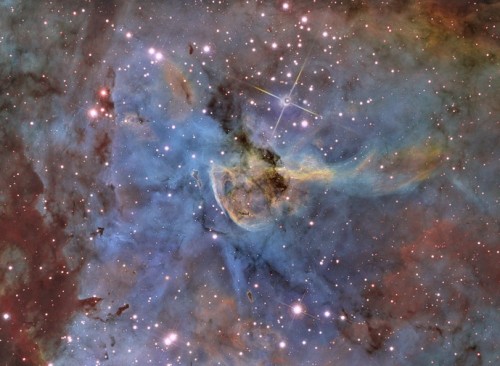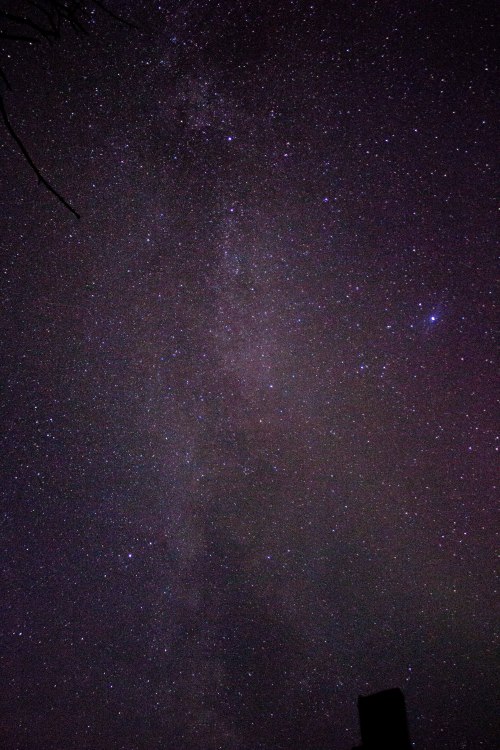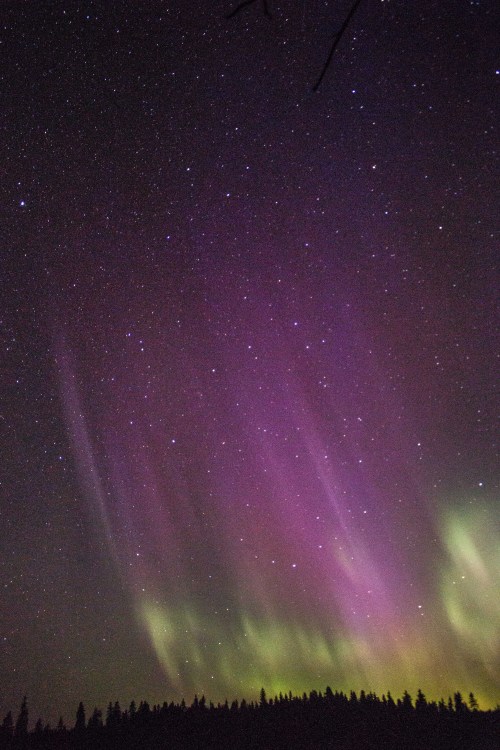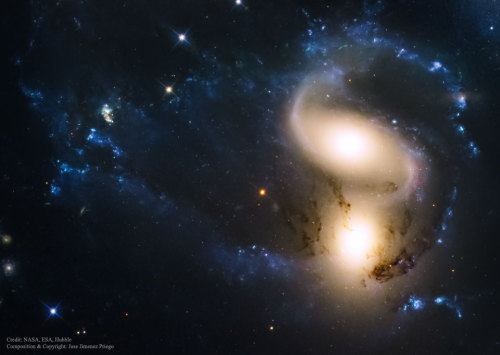A Black Hole Choir : The Blue Dots In This Field Of Galaxies, Known As The COSMOS Field, Show Galaxies

A Black Hole Choir : The blue dots in this field of galaxies, known as the COSMOS field, show galaxies that contain supermassive black holes emitting high-energy X-rays.
js
More Posts from Littlecadet-biguniverse and Others


Mercury is passing directly across the sun for the first time in nearly a decade.
The innermost planet of our solar system will look like a small, dark circle cutting across the sun’s disc. In the U.S., the transit began shortly after 7 a.m. ET on Monday and will continue for more than seven hours.
At least part of the transit, which only happens about 13 times every century, will be visible across the Americas, Europe, Africa and large portions of Asia.
If you’re hoping to watch it, eye protection is key. NASA stresses that “viewing this event safely requires a telescope or high-powered binoculars fitted with solar filters made of specially-coated glass or Mylar.”
You won’t be able to see the tiny dot of Mercury on its celestial crawl without magnification, NASA says.
Another option: Check out one of the multiple live-streaming events going on Monday. NASA says it will stream the transit here, here and here.
It’s not all about the show — transits like this one have historically been, and continue to be, important research opportunities for scientists. First observed in 1631, the transits were later used to “measure the distance between the Earth and the Sun,”NASA said.
Now, they provide scientists an opportunity to study the planets’ exospheres — the thin layer of gases that make up their atmosphere.
“When Mercury is in front of the sun, we can study the exosphere close to the planet,” NASA scientist Rosemary Killen said in a release from the Jet Propulsion Laboratory. “Sodium in the exosphere absorbs and re-emits a yellow-orange color from sunlight, and by measuring that absorption, we can learn about the density of gas there.”
Additionally, scientists have found that a transiting planet causes a drop in the sun’s brightness.
This phenomenon is “the main way we find planets outside the solar system,” NASA says.
The Kepler mission, which is searching for habitable planets, has found 1,041 planets to date using the transit method. The mission says it is able to determine the size of a planet by observing its transit.
Image Credit: NASA

Eta Carinae and Keyhole Nebula (NGC 3324), inside the Carina Nebula (NGC 3372)
Do telescopes actually take colorful photographs or are the pretty colorful photographs of galaxies that we know colored afterwards? If a human was floating through space, would space look colorful to them?
So some pictures are taken in different wavelengths to see different characteristics. (infrared wavelengths to see through thick gas and dust, xray wavelengths to see highly energized regions)
But, in the visible wavelengths you are seeing the colors. They’re just enhanced brighter than they might be.
For example, I took this picture of “the California Nebula” using a camera (Canon 60Da) attached to a telescope. This shows one exposure, and the background is red due to effects of the camera (which you subtract):

You take multiple exposures, combine them, subtract the background effects & adjust the color a little and get this…



Northern lights over Nyrölä, Finland. My cousin called me last night and said “There’s no clouds over the Central Finland and it’s very dark.”. And so we drove at midnight 30 miles out of the city to get these photographs. It was magical. -Eero

Milky Way over Shelbyville, Indiana
js


Island Point Milky Way
Nikon d5100 - 6 x 25s - ISO 4000 - f2.8 - 16mm

Colliding Galaxies NGC 7318, part of Stephan’s Quintet

-
 cumbernickbumberbatch liked this · 6 years ago
cumbernickbumberbatch liked this · 6 years ago -
 pleasebeans liked this · 6 years ago
pleasebeans liked this · 6 years ago -
 i-was-supposed-to-have-a-twin liked this · 6 years ago
i-was-supposed-to-have-a-twin liked this · 6 years ago -
 daemondamian liked this · 6 years ago
daemondamian liked this · 6 years ago -
 thestoryofone liked this · 6 years ago
thestoryofone liked this · 6 years ago -
 amazonprimebox liked this · 6 years ago
amazonprimebox liked this · 6 years ago -
 metalzoic liked this · 6 years ago
metalzoic liked this · 6 years ago -
 kucukbirvedabusesi liked this · 6 years ago
kucukbirvedabusesi liked this · 6 years ago -
 madxam liked this · 6 years ago
madxam liked this · 6 years ago -
 per-asperaa-ad-astra reblogged this · 6 years ago
per-asperaa-ad-astra reblogged this · 6 years ago -
 per-asperaa-ad-astra liked this · 6 years ago
per-asperaa-ad-astra liked this · 6 years ago -
 msrose liked this · 6 years ago
msrose liked this · 6 years ago -
 thenighteternal liked this · 6 years ago
thenighteternal liked this · 6 years ago -
 amandathescarlet liked this · 6 years ago
amandathescarlet liked this · 6 years ago -
 dawnangel-0687 liked this · 6 years ago
dawnangel-0687 liked this · 6 years ago -
 winreyfenrir reblogged this · 6 years ago
winreyfenrir reblogged this · 6 years ago -
 timessa liked this · 6 years ago
timessa liked this · 6 years ago -
 smallfryingpan liked this · 6 years ago
smallfryingpan liked this · 6 years ago -
 ashellofmyformerself liked this · 6 years ago
ashellofmyformerself liked this · 6 years ago -
 lulinapoli liked this · 6 years ago
lulinapoli liked this · 6 years ago -
 pinklemonwitch reblogged this · 6 years ago
pinklemonwitch reblogged this · 6 years ago -
 pinklemonwitch liked this · 6 years ago
pinklemonwitch liked this · 6 years ago -
 16fahri liked this · 6 years ago
16fahri liked this · 6 years ago -
 restlessundead reblogged this · 6 years ago
restlessundead reblogged this · 6 years ago -
 argle-bargling liked this · 6 years ago
argle-bargling liked this · 6 years ago -
 permanentlyinflux reblogged this · 6 years ago
permanentlyinflux reblogged this · 6 years ago -
 gamora-borealis liked this · 6 years ago
gamora-borealis liked this · 6 years ago -
 missolitude liked this · 6 years ago
missolitude liked this · 6 years ago -
 magellaniic reblogged this · 6 years ago
magellaniic reblogged this · 6 years ago -
 eine-idee liked this · 7 years ago
eine-idee liked this · 7 years ago -
 hippogriffz liked this · 7 years ago
hippogriffz liked this · 7 years ago -
 entykk liked this · 7 years ago
entykk liked this · 7 years ago -
 spookyx12 reblogged this · 7 years ago
spookyx12 reblogged this · 7 years ago
GREETINGS FROM EARTH! Welcome to my space blog! Let's explore the stars together!!!
144 posts
